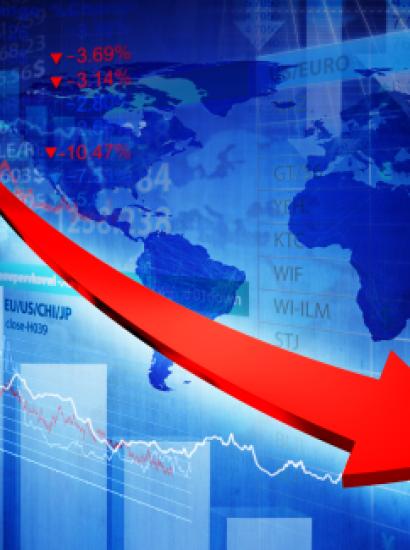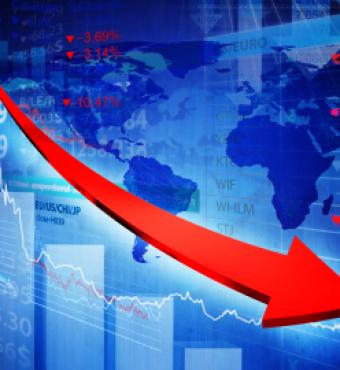- Economics
- Budget & Spending
- Monetary Policy
The large market declines and increased volatility of the past few months have prompted concerns that we may be headed toward financial chaos again. The 2010 Dodd-Frank law was the supposed solution to prevent that from happening, but as Milton Friedmancautioned, “the government solution to a problem is usually as bad as the problem and very often makes the problem worse.”
Case in point: Dodd-Frank’s Financial Stability Oversight Council has subjected several U.S. banks and nonbank financial institutions to special regulatory scrutiny based on the idea that their failure could lead to another crisis. But the theory behind so-called systemically important financial institutions, or SIFIs, is fundamentally flawed. Financial crises are pathologies of an entire system, not of a few key firms. Reducing the likelihood of another panic requires treating the system as a whole, which will provide greater safety than having the government micromanage a number of private companies.
The risks to a system are most pronounced when financial institutions borrow heavily to finance investments. If the value of the assets falls or becomes highly uncertain, creditors—who include depositors—will rush to pull out their money. The institution fails when it is unable to find a new source of funds to meet these obligations.
The collapse of Bear Stearns and the Lehman Brothers bankruptcy are prime examples. Before the 2008 crisis, some firms had leverage ratios of 25:1 or higher, meaning that for every $26 of investment, the firm needed to borrow $25. This required banks to obtain large amounts daily to pay off previous creditors. But when the value of their investments fell—which in the last crisis included a large share of mortgage and other asset-backed securities—the banks could not borrow and had to raise money quickly by selling their assets, sometimes at fire-sale prices. This turned seemingly solvent firms into insolvent ones.
A bank’s inability to pay off its creditors can be transmitted to others. The mechanism can be direct: The debtor bank defaults, and its creditors cannot repay their creditors, etc. But the mechanism can be indirect. The suspicion that similar assets held by other institutions are subject to the same downward pressure can start a run at even an unrelated financial institution.
However, this domino effect has less to do with the so-called interconnectedness of the financial institutions than with weaknesses in the system itself. To understand why, consider the contrast between the 2008 financial crisis and the dot-com crash in the late 1990s and early 2000s.
The bursting of the dot-com bubble and subsequent failure of many Internet-based companies had serious repercussions for investors, but not for the financial sector. That’s because the failed firms were financed primarily through equity, not borrowed money. Investors took big losses when the value of tech companies fell precipitously. But there were no runs.
Mutual funds are similar. Many are large and hold assets that may be risky, but they don’t fail when the value of their assets falls. The liabilities move one-for-one with the value of the assets because the fund does not promise to pay off any fixed amount to its investors. There is no reason for a run: Getting money out first serves no purpose to investors nor does withdrawal of funds cause significant distress. The fund simply sells the assets at the market price and returns that amount to investors.
These factors suggest that instead of trying to divine which firms are systemically important, banks should be required to get a larger share of the funds they invest by selling stock. Bank investment funded by equity avoids the danger of a run: If the value of a bank’s assets falls, so too does the value of its liabilities. There is no advantage in getting to the bank before others do.
Using higher equity requirements to reduce systemic risk has been suggested on these pages by Allan Meltzer, and in “The Bankers’ New Clothes: What’s Wrong with Banking and What to Do About It,” a recent book by Anat Admati and Martin Hellwig that has received much attention.
This reasoning also implies that deposits—the checking and saving accounts that are bank liabilities—should be invested only in short-maturity secure assets, like Treasury bills. A bank’s long-term investments, in mortgages or stocks, can then experience big losses or even fail. Bad for the bank and its investors, but not for the financial system or for depositors, whose deposits are backed by virtually risk-free assets.
The Federal Reserve seems to be wising up, and may require higher equity capital for the SIFIs and place less emphasis on regulation. Fed Chair Janet Yellen told the Senate Banking Committee on July 16 that she is open to raising the threshold on the asset level warranting SIFI status and scrutiny. Additionally, the international Financial Stability Board announced on July 31 that it would set aside work on designating funds or asset managers as systemically important to focus instead on whether their activities or products were systemically important.
Dodd-Frank’s method of protecting the financial system is based on a misdiagnosis of what led to the 2008 financial crisis. A more rules-based approach that focuses primarily on equity and leverage would provide better certainty and a higher cost-benefit ratio than designating firms as SIFIs.
Mr. Lazear is a professor at Stanford University’s Graduate School of Business and a Hoover Institution fellow. He is a shareholder-elected director of Dimensional’s U.S. Mutual Funds, where his role is to represent shareholder interests generally and in their relationship with the fund adviser.
















